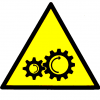-
Similar Content
-
- 3 replies
- 2,271 views
-
Malleable VIs - Nested Malleables - Broken Class adaptation in Malleable VIs in 2019
By Ryan Vallieu,
- 3 replies
- 8,469 views
-
- 4 replies
- 8,350 views
-
- 4 replies
- 6,495 views
-
- 2 replies
- 2,511 views
-







Recommended Posts
Join the conversation
You can post now and register later. If you have an account, sign in now to post with your account.